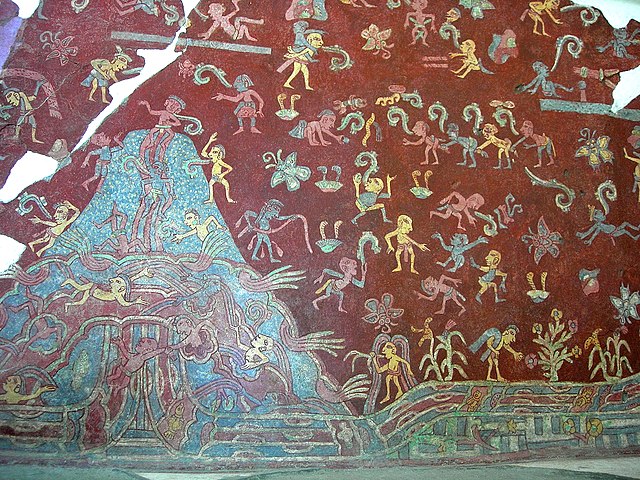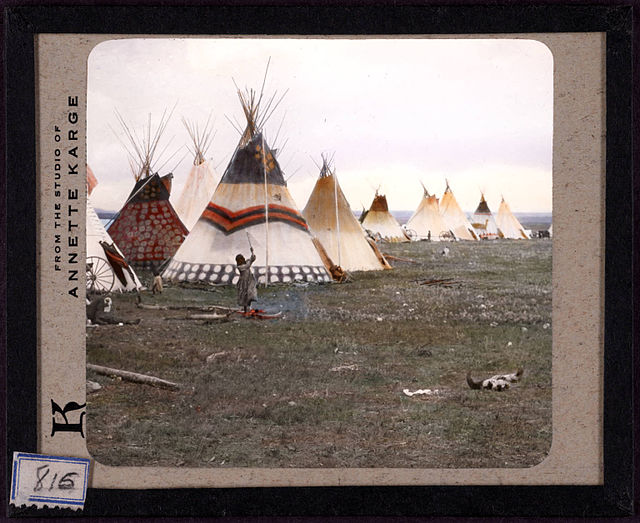Painting in the Americas before European colonization
Painting in the Americas before European colonization is the Precolumbian painting traditions of the Americas. Painting was a relatively widespread, popular and diverse means of communication and expression for both religious and utilitarian purpose throughout the regions of the Western Hemisphere. During the period before and after European exploration and settlement of the Americas; including North America, Central America, South America and the islands of the Caribbean, the Bahamas, the West Indies, the Antilles, the Lesser Antilles and other island groups, indigenous native cultures produced a wide variety of visual arts, including painting on textiles, hides, rock and cave surfaces, bodies especially faces, ceramics, architectural features including interior murals, wood panels, and other available surfaces. Many of the perishable surfaces, such as woven textiles, typically have not been preserved, but Precolumbian painting on ceramics, walls, and rocks have survived more frequently.

Tepantitla at Teotihuacan. The Mountain of Abundance mural, also known as the “Paradise of Tlaloc”. Circa 450-600 AD, original fresco.
Great Goddess of Teotihuacan mural from the site at Tetitla, Mexico
Mural from the Complex of Tepantitla in Teotihuacan, a reproduction in the National Museum of Anthropology in Mexico City
Mural of the Jaguars compound in Teotihuacan.
Plains hide painting is a traditional North American Plains Indian artistic practice of painting on either tanned or raw animal hides. Tipis, tipi liners, shields, parfleches, robes, clothing, drums, and winter counts could all be painted.
Sioux parfleche, ca. 1900, Gilcrease Museum
Kiowa parfleche, ca. 1890, Oklahoma History Center
Buffalo hide painting of Pawnees battling the Villasur expedition
Siksika tipis in Montana, photo by Walter McClintock








